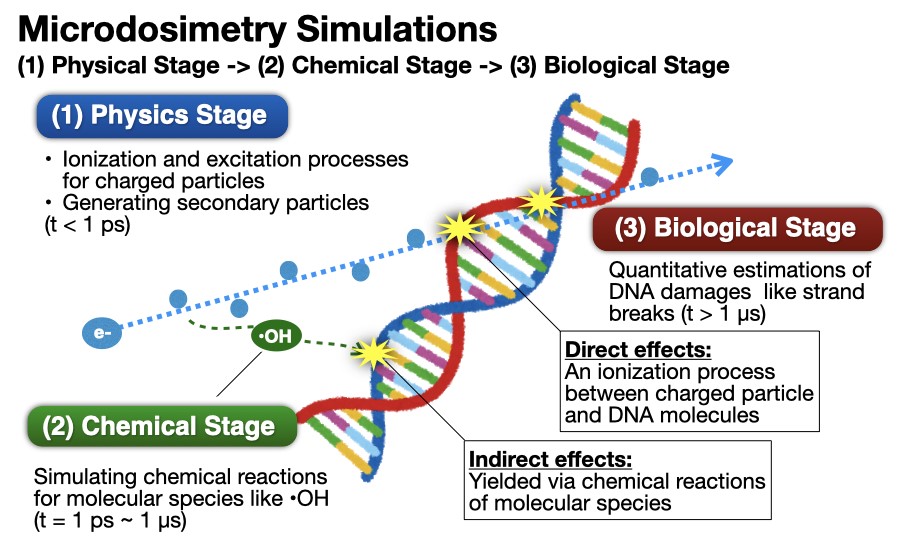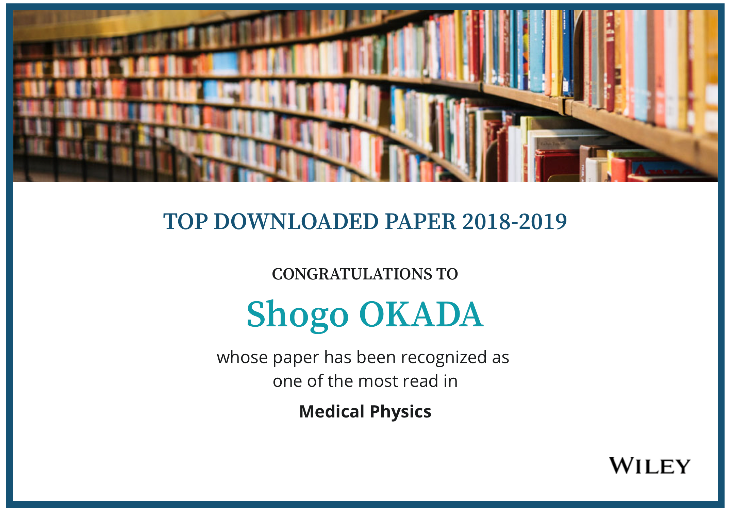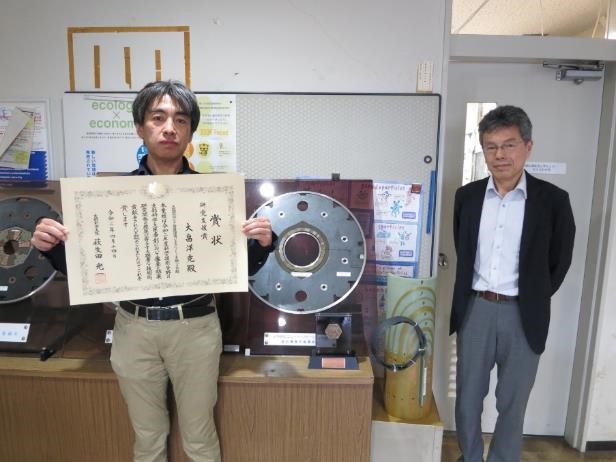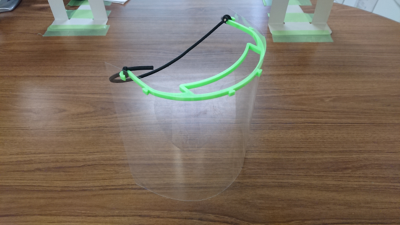Paper on MPEXS-DNA, a GPU-Based Radiation Simulation Code, Wins Top Download Award from Medical Physics
(English translation 2023-12-13)
The paper "MPEXS-DNA, a new GPU based Monte Carlo simulator for track structures and radiation chemistry at the subcellular scale" has received the 2018-2019 Top Download Award. The paper was written by Shogo Okada, assistant professor at the Computing Research Center, and others, and was published in the journal. The award is given to the papers with the 10% most downloads in the 12 months since its online publication in AAPM (The American Association of Physicists in Medicine) Medical Physics. This indicates that the research has received a great deal of attention. Professor Takashi Sasaki, associate professor Koichi Murakami, and researcher Amako Katsuya are also co-authors on this paper from the Computing Research Center.
Dr. Okada explains the paper
The Computing Research Center is conducting research related to the elucidation of the mechanism of radiation damage in DNA by Monte Carlo simulations as part of an interdisciplinary research project. When cells are exposed to radiation, free radicals are produced. This reacts with DNA molecules and causes damage (see figure below). If DNA damage can be estimated by simulation, it will be possible to quantitatively evaluate the effects of low-dose radiation exposure on the human body, such as astronauts. It is also expected to lead to research for the advancement of radiotherapy for cancer.

This simulation calculates the distribution of energy loss of charged particles and free radicals inside the cell nucleus. The amount of calculation is enormous and takes several days to several weeks even on a CPU cluster. This computation time is a bottleneck in our research. Therefore, we have developed a radiation simulator, MPEXS-DNA, which utilizes a graphics processing unit (GPU). GPUs are parallel computing devices specialized for image processing, and in recent years they have attracted attention as accelerators for various scientific calculations, including AI. In MPEXS-DNA, physical and chemical reaction processes equivalent to those in Geant4-DNA[1] are reimplemented from scratch in the GPU programming language called CUDA. It can simulate radiation reactions when water is irradiated. This research won the best poster award at GTC Japan 2016 hosted by NVIDIA in 2016 [2]. Since then, we have continued to optimize the MPEXS-DNA code, and coupled with improved hardware performance, the computational speed has made further leaps since then.

Dr. Okada said, "I am very honored by the attention this paper has received in the American journals. MPEXS-DNA is still under development and we are now working on the implementation of the DNA damage assessment model. Through the research and development of MPEXS-DNA, I hope to contribute to the development of the field of radiation biology in any way I can."
References
- Shogo Okada et al, "MPEXS-DNA, a new GPU-based Monte Carlo simulator for track structures and radiation chemistry at subcellular scale", Med. Phys. 46(3) 1483-1500 (2019), https://doi.org/10.1002/mp.13370
- MPEXS: https://wiki.kek.jp/display/mpexs/MPEXS+Project
- [1] Geant4 is a radiation simulation toolkit used in detector and physics simulations for particle, nuclear, and cosmic ray experiments, and is being developed by KEK and CERN in international collaboration. In recent years, it has spread widely to other fields. Geant4-DNA is an extension code of Geant4 that allows users to run radiation simulations at the cellular level.
- Geant4: http://www.geant4.org/
- Geant4-DNA: http://geant4-dna.org/
- [2] Researcher Shogo Okada won the Best Poster Award at GPU Technology Conference Japan 2016 (KEK Newsroom, October 19, 2016) (in Japanese)


